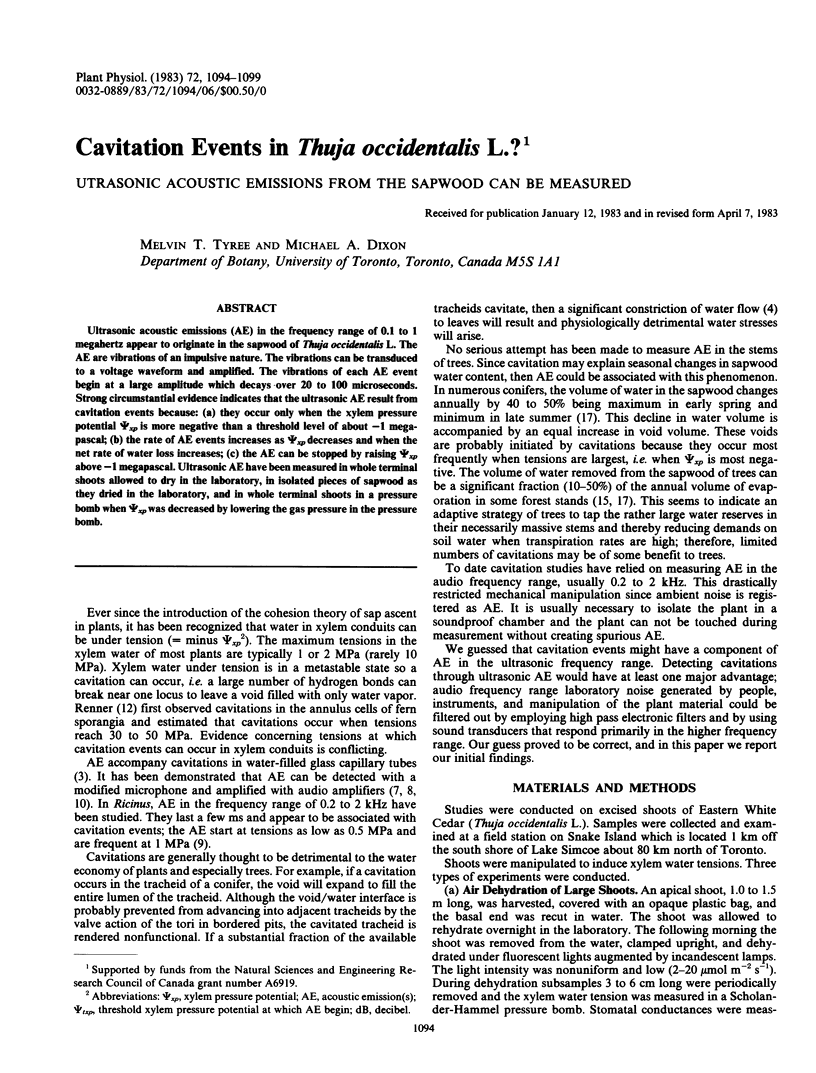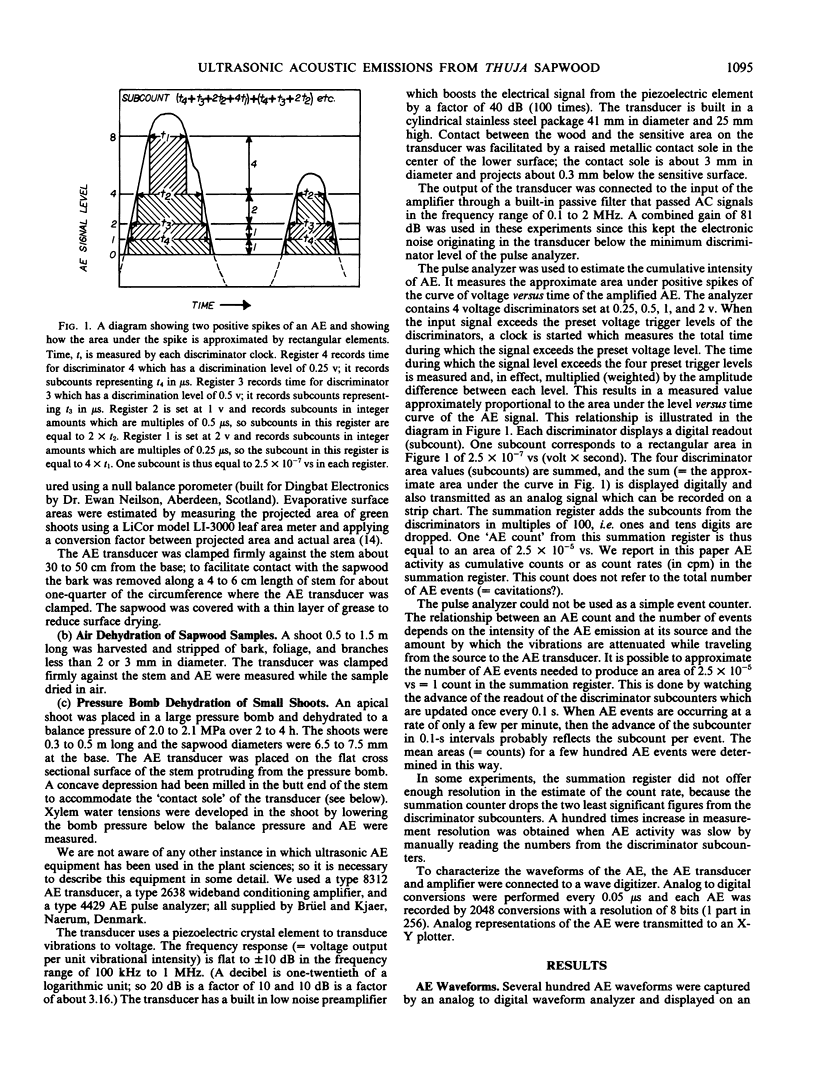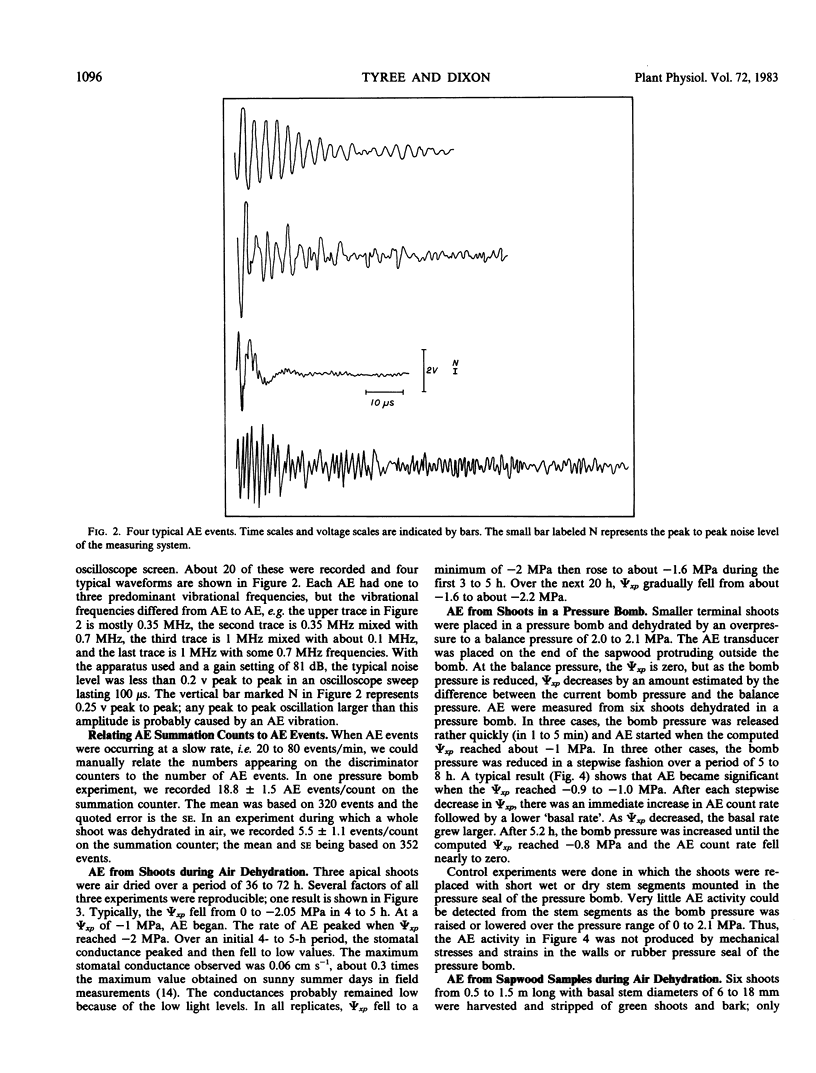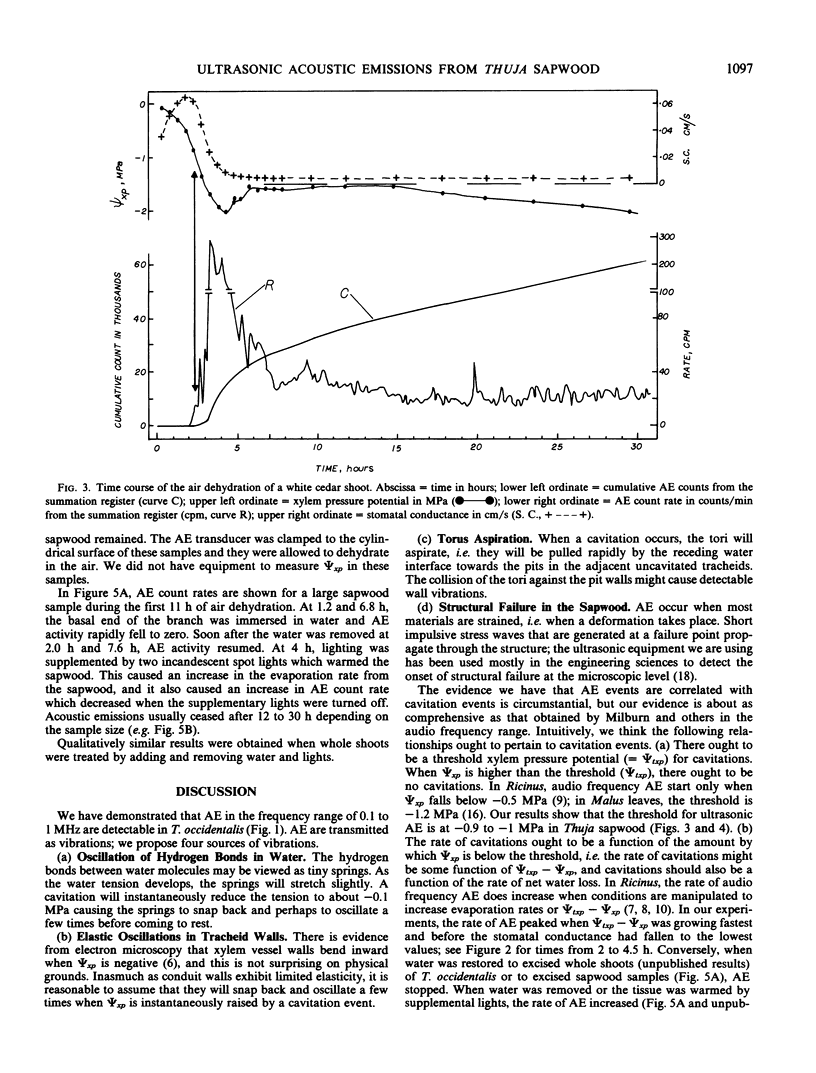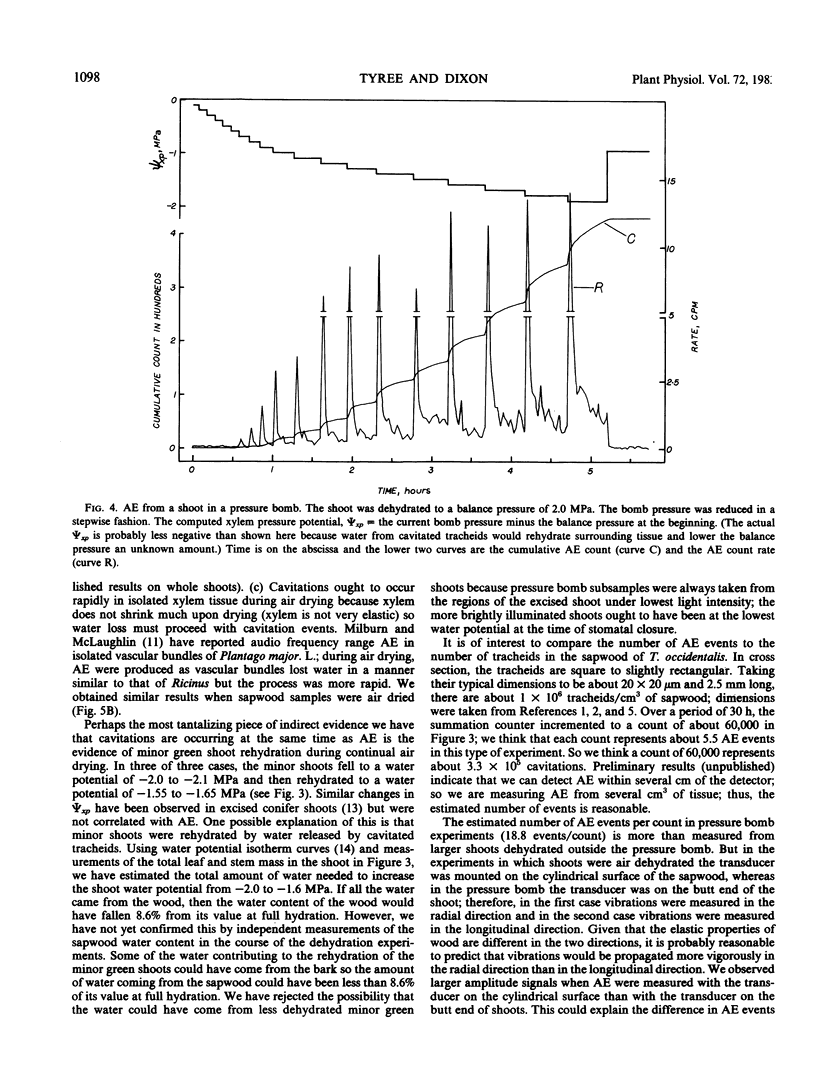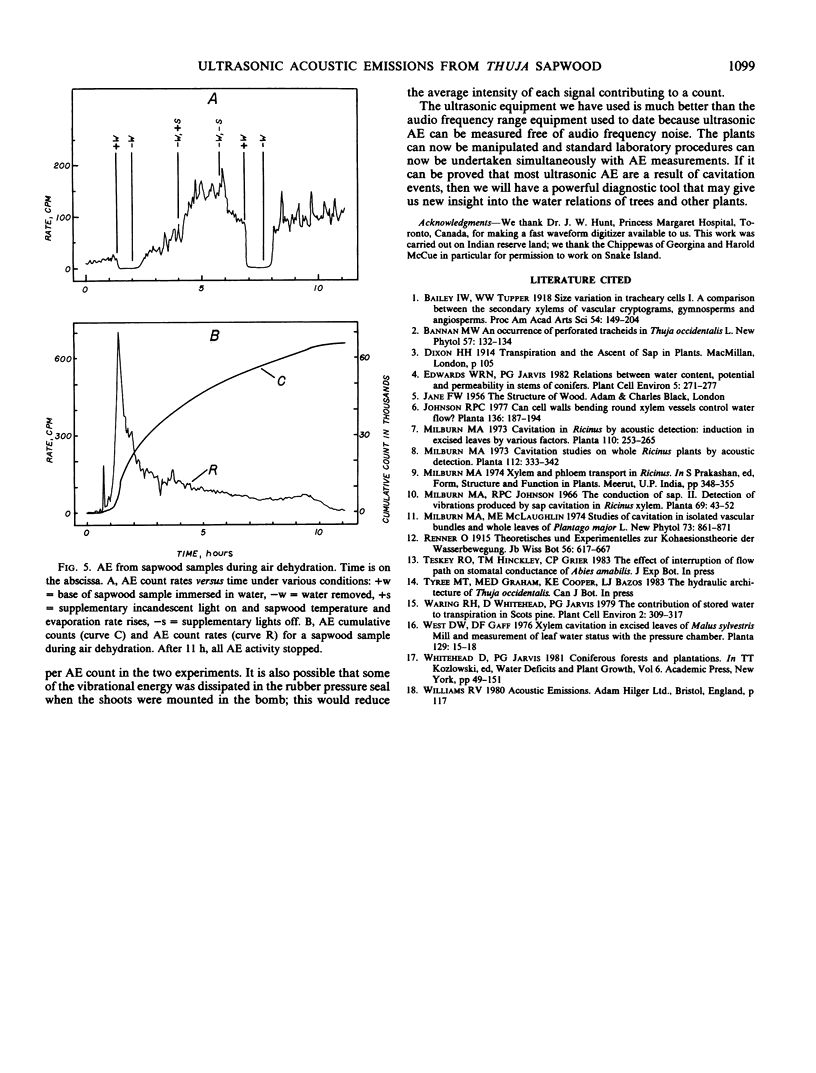Abstract
Ultrasonic acoustic emissions (AE) in the frequency range of 0.1 to 1 megahertz appear to originate in the sapwood of Thuja occidentalis L. The AE are vibrations of an impulsive nature. The vibrations can be transduced to a voltage waveform and amplified. The vibrations of each AE event begin at a large amplitude which decays over 20 to 100 microseconds. Strong circumstantial evidence indicates that the ultrasonic AE result from cavitation events because: (a) they occur only when the xylem pressure potential Ψxp is more negative than a threshold level of about —1 megapascal; (b) the rate of AE events increases as Ψxp decreases and when the net rate of water loss increases; (c) the AE can be stopped by raising Ψxp above —1 megapascal. Ultrasonic AE have been measured in whole terminal shoots allowed to dry in the laboratory, in isolated pieces of sapwood as they dried in the laboratory, and in whole terminal shoots in a pressure bomb when Ψxp was decreased by lowering the gas pressure in the pressure bomb.
Full text
PDF